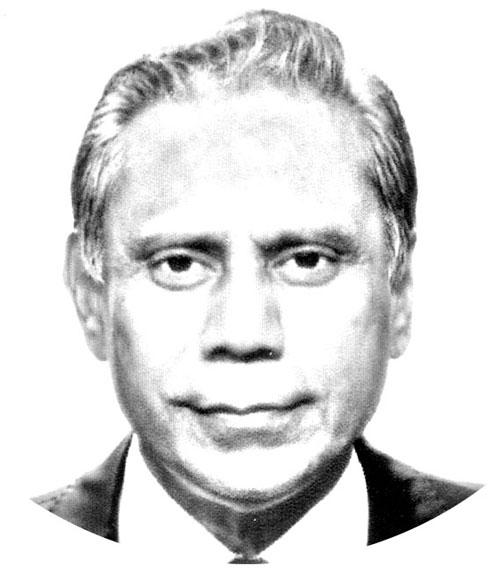Sultan M Hali
FEW people are aware that the founder of Pakistan, Quaid-i-Azam Muhammad Ali Jinnah, was so ill that he would not have lived to see Pakistan’s first Independence Day, but he was enabled to do so by a brave and daring feat by Pakistan Air Force. The following was narrated to me by Brigadier Noor A. Husain (Retd.), the last Army ADC of the Quaid in a TV programme hosted by me titled: “The Quaid’s last 100 Days”. The Brigadier stated that the Quaid’s last public appearance was on 1st July 1948 to inaugurate the State Bank of Pakistan. Despite instructions from his doctors not to leave Ziarat, where he was recuperating, he made the fateful trip to Karachi and back. The Quaid was especially keen to inaugurate the State Bank, since he considered it a great achievement. The Hindus believed that monetary policies and fiscal understanding was not the forte of Muslims and Pakistan, despite its creation, would collapse and the Muslims of Pakistan would beg the Hindus to take them back in the Indian fold. The Quaid was very proud that Pakistan had not only been created but had also established its own State Bank.
Whosoever heard his speech on this occasion, realized the Quaid was in bad health, his voice scarcely audible, pausing, coughing, as he proceeded with the text of his speech. He looked so pale and anemic, but within that emaciated body there burnt the dazzling flame of genius. The Quaid’s prescience invoked him to state: “I shall watch with keenness the work of your Research Organization in evolving banking practices compatible with Islamic ideas of social and economic life. The economic system of the West has created almost insoluble problems for humanity and to many of us it appears that only a miracle can save it from disaster that is not facing the world. It has failed to do justice between man and man and to eradicate friction from the international field. On the contrary, it was largely responsible for the two world wars in the last half century. The Western world, in spite of its advantages, of mechanization and industrial efficiency is today in a worse mess than ever before in history.
The adoption of Western economic theory and practice will not help us in achieving our goal of creating a happy and contented people. We must work our destiny in our own way and present to the world an economic system based on the true Islamic concept of equality of manhood and social justice. We will thereby be fulfilling our mission as Muslims and giving to humanity the message of peace which alone can save it and secure the welfare, happiness and prosperity of mankind.” The trip to Karachi and back took its toll and the Quaid became so ill that there was little chance of his survival to witness the first birthday of his creation: Pakistan. Brigadier Noor described that in the first week of August 1948, the doctors prescribed a certain injection, which would prolong his life by two weeks or so. He traveled from Ziarat to Quetta to look for the injection but did not find it with any chemist. He was advised that it may be available at Karachi. Brigadier Noor informed Colonel Geoffrey Knowles, the Military Secretary to the Governor-General, who made arrangements for the injection to be purchased from Karachi. Now there was the question of transporting the injection to Quetta. Colonel Knowles spoke to Air Vice Marshal Perry Keene, the first Commander in Chief of the Pakistan Air Force. The Air Headquarters then was at Karachi. He in turn asked the PAF’s air transport command to do the honours.
The officer in charge of air transport was then Squadron Leader Abdullah Baig, who readily agreed. Unfortunately, Quetta’s Samungli airfield state was declared “Red” by the Meteorological Department because of poor visibility, making it unsafe for landing or take off. Abdullah Baig asked for volunteers for the daring mission. Every aircrew stood up to help save the Quaid’s life. Squadron Leader Baig declared that the mission was so dangerous and suicidal that he would dare it alone and set off in the PAF Dakota for Quetta. Brigadier Noor, continuing his narration, states that he took a thermos of coffee and went and stood at the tarmac to wait for the arrival of the PAF Dakota. He says that the visibility was so bad that he could see nothing.
Even the ground staff had packed up. After a while he heard the Dakota make a landing. The aircraft came to a halt and Squadron Leader Baig jumped out, came to Brigadier Noor and handed him the packet of injections, stating: “Here you are old chap; got to hurry, I have left the engines running since I could not risk bringing any technicians with me.” Brigadier Noor offered him a cup of coffee, which he gratefully accepted and whistling loudly departed, without a care in the world, as if he had done nothing extraordinary. The injection not only prolonged the Quaid’s life to see the first Independence Day but also Eid-ul-Fitr, which fell on 27 August 1948, enabling the Quaid to address the nation for the last time through a recorded speech via radio. He breathed his last on 11 September 1948; leaving the fledgling nation orphaned. But the resolute PAF had helped prolong his life by a few weeks.
—The writer is retired PAF Group Captain and a TV talk show host.









